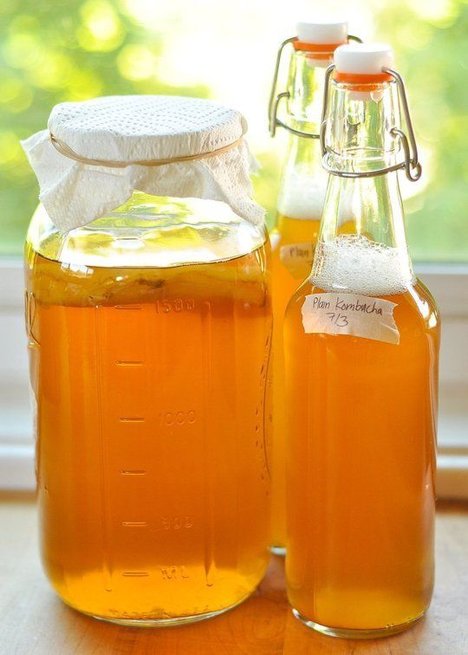In my first kombucha recipe, one of the concerns some of you had was the use of sugar to feed the yeast and bacteria. As I pointed out, very little sugar is left behind. But if you’re drinking a few nips of the stuff per day, it can add up to several teaspoons. So I gave things a crack using rice malt syrup, which contains no fructose.

RMS is a blend of complex carbohydrates, maltose and glucose. It’s fructose free, slow releasing and doesn’t dump on the liver like pure glucose. This recipe below was previously included in my fructose-free chai kombucha post, but I felt it was lost amongst the star anise and cinnamon sticks, so I’m sharing it here as a stand alone.
I’d read that honey doesn’t work when making kombucha – the theory being the antibacterial agents kill the SCOBY (symbiotic colony of bacteria and yeast). So I was a little concerned about rice malt syrup – it’s a fermented product and I had a picture of the different bacteria squabbling for attention in the bowl, eventually annihilating each other. Plus, I’d used RMS to make my Fermented Ginger-Ade and found it needed to be a blend of sugar and RMS to work properly. Oh, and having spoken to various experts and Google-ing the bejesus out of the topic, I found no one had tried it this way.
But, I can report back from the mouldy frontline: Rice malt syrup makes a perfect kombucha.
Fructose-free kombucha
- 1 litre pure, filtered water (note: most recipes advise not using tap as the chlorine can kill the SCOBY. I personally use tap and have not had issues.)
- ¼ cup rice malt syrup
- 2 organic black tea bags (many say non-organic tea just doesn’t work as well)
- ½ cup pre-made kombucha (from a previous batch or a commercial one in a bottle…see below)
- 1 SCOBY
You might need to leave it to ferment an extra day or two, and I think it does produce a slightly tarter result…which I personally MUCH prefer. If you’ve been off sugar a while, you’ll probably be the same.
What’s your favourite way to make kombucha?

